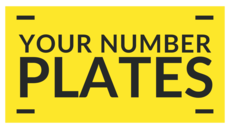Introduction: Navigating the 2025 DVLA Landscape
The UK’s motoring regulations continue to evolve, and 2025 brings pivotal updates from the DVLA that every vehicle owner, collector, and custom plate enthusiast must understand. Number plates are no longer mere identifiers; they are subject to intricate legal, technological, and safety standards. Staying abreast of these changes is essential to avoid fines, compliance issues, and potential vehicle complications.
Overview of DVLA Number Plate Regulations
Standardization and Compliance
DVLA mandates govern size, font, spacing, color, and reflective quality. These standards ensure visibility, safety, and uniformity across the UK, facilitating law enforcement and automated recognition systems.
Historical Context of UK Plates
From rudimentary metal plates to embossed and reflective designs, UK number plates have undergone continuous refinement. Understanding this trajectory illuminates the rationale behind current legal requirements.
New Font and Legibility Requirements
Mandatory Typeface Adjustments
2025 introduces subtle yet critical font refinements to improve legibility, particularly for automated recognition systems. Certain curved or stylized fonts previously permitted may now be disallowed.
Implications for Custom Plates
Owners of personalized plates must verify that existing designs comply. Non-compliance could result in plates being deemed illegal, necessitating costly replacements.
Colour and Reflectivity Updates
Front and Rear Plate Specifications
Front plates remain white, rear plates yellow, but enhanced reflectivity standards are now enforced to improve nighttime visibility and compliance with international norms.
Safety and Night Visibility Enhancements
Reflective coatings must meet specific luminosity thresholds. Plates failing these standards risk legal penalties and reduced visibility in low-light conditions.
Changes in 4D and Embossed Plate Regulations
4D Plates Recognition
The DVLA formally recognizes certain 4D and three-dimensional plates, provided they adhere to defined dimensions and letter depth specifications.
Material and Dimension Guidelines
High-grade polymers, reinforced acrylics, and approved metals are now mandated for 4D plates. Letter and number extrusion must remain within precise tolerances to ensure legality.
Registration Transfer Updates
New Procedures for Personalised Plates
Transferring registrations between vehicles now involves additional verification steps, including online authentication and updated documentation for DVLA records.
Fees and Transfer Timelines
Fees have been adjusted, and expected processing timelines have been extended slightly to accommodate verification processes. Vehicle owners must plan transfers in advance.
Restrictions on Offensive or Inappropriate Plates
Expanded Offense Categories
DVLA has broadened the definition of unacceptable combinations. Humor, innuendo, or ambiguous connotations now undergo stricter scrutiny.
DVLA Enforcement Mechanisms
Plates flagged as offensive may be immediately cancelled, with fines or enforced removal. DVLA encourages proactive checks prior to purchase to prevent complications.
Digital Verification and Anti-Forgery Measures
Laser Etching and Micro-Patterning
New plates incorporate advanced laser etching and micro-patterning for anti-forgery purposes. These features enhance authentication and reduce fraudulent reproductions.
Tracking and Authentication Innovations
Digital verification codes and QR identifiers are being trialed for select plate categories, allowing instant verification against DVLA databases.
Compliance for Imported and Exported Vehicles
Harmonization with EU and Global Standards
Imported vehicles must adhere to updated reflectivity, font, and spacing requirements. Exported vehicles must meet destination country regulations while maintaining UK compliance until deregistration.
Registration Adjustments for Foreign Vehicles
DVLA has simplified certain registration adjustments for vehicles temporarily imported, aligning processes with modern trade and travel patterns.
Penalties and Legal Repercussions
Fines, Impoundment, and Insurance Impacts
Non-compliant plates carry fines up to £1,000, potential vehicle impoundment, and possible insurance invalidation in the event of an incident.
Examples of Common Violations
Frequent issues include incorrect font usage, insufficient reflectivity, and misuse of offensive combinations. Vigilance is critical to avoid these pitfalls.
Guidance for Vehicle Owners and Enthusiasts
Ensuring Compliance with New Rules
Regular audits, consultation with authorized plate suppliers, and DVLA online checks help owners remain fully compliant.
Professional Consultation and Resources
Engaging with reputable vendors and legal advisors minimizes errors and ensures smooth registration, transfers, and personalization within regulatory frameworks.
Future Trends in DVLA Number Plate Regulations
Smart Plates and Electronic Identifiers
The DVLA is exploring electronic displays and dynamic identifiers for integration with autonomous and connected vehicles, offering real-time updates and enhanced anti-fraud measures.
Predicted Legislative Developments
Further restrictions on font manipulation, reflectivity standards, and online authentication are anticipated, reflecting a trajectory toward digital enforcement and high-security compliance.
Conclusion: Staying Ahead of DVLA Compliance in 2025
The 2025 legal updates underscore the DVLA’s focus on safety, legibility, and security. Vehicle owners and enthusiasts must adapt to new standards, balancing personalization with compliance. From advanced 4D designs to digital verification, staying informed ensures lawful, stylish, and secure number plate ownership well into the future.

